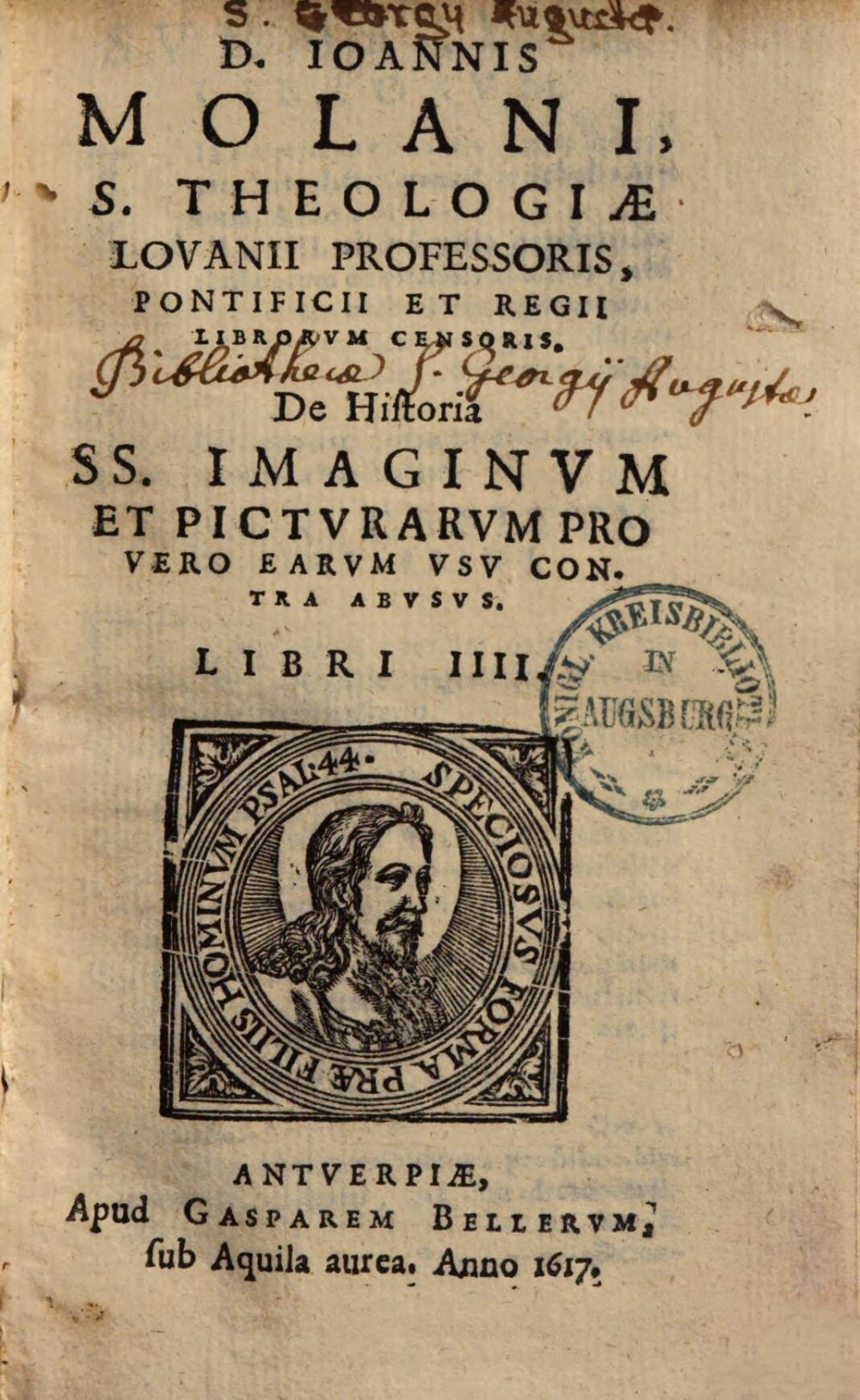
Augsburg, Staats- und Stadtbibliothek — Th H 1475. Digital Reproduction: München, Bayerische Staatsbibliothek, 2015.
In the second paragraph in book 2, chapter 26, Molanus reflects on the question of who is capable of judging whether an artwork fulfils the requirements of the Church; he thus inexplicitly reflects on his own role as a critic of religious art. It must not surprise that as a theologian he takes a rather firm stance on this matter: following the famous proverb ascribed to the painter Apelles, “shoemaker not beyond the shoe”, Molanus argues that only theologians are the ones to judge art on matters such as destiny, superstition, heresy, and moral scandal and not painters, mathematicians in the case of mathematical art, or other people.
“The Fathers we have been talking about have in no way sinned against this sentence which, according to Quintilian, comes to us from Fabius Pictor, ‘Happy are the future of the arts, if only those who practise them were to judge them.’ All the Fathers, I do not have any doubt, would have approved on the direction of Fabius Pictor, but one thing is to judge of the mathematical art or that of painting another of that which is added to it from the outside. It is not the task of mathematicians or painters to judge in their own right what has to do with destiny, superstition, heresy and moral scandal, but it is the task of theologians to stop such abuses and impiety which are introduced from outside into an art which is, in fact, beneficial, and it is up to them to judge them. If someone who has never been versed in the art of astronomy or the art of painting were to try to judge what is proper and specific to them, he would deserve to be told the answer of the famous painter Apelles to the shoemaker: ‘Shoemaker, not beyond the shoe.’ This has become a proverb, as Pliny the Elder writes in the Natural Histories, book 39, chapter 10.”
“Nihil itaque praedicti Patres peccaverunt contra eam sententiam, qua Quinctiliano test Fabius Pictor ait, ‘Felices futuras arres, si solo artifices de iis iudicarent.’ Omnes non dubito Fabii Piscotis sententiam multum approbaverint, sed aliud est iudicare de arte Mathematica aut Pictoria, aliud vero de iis quae aliunde ad has artes adiunguntur. De fato enim, de superstitione, de haeresi et scandalo morum, non est proprium iudicium penes Mathematicos aut pictores, sed Theologorum est huiusmodi abusibus aut impietaribus, aliunde in bonam alioqui artem accersitis resistere, ac de eis iudicium ferre. Si quis autem nunquam in mathesi aut pingendi arte versatus, de iis iudicare vellet quae hs artbus propria sunt et peculiaria, e merito abiiceretur quod eleberrimus pictor Apelles sutori: ‘ne ultra crepidam sutor iudicare.’ Quod ab eo in proverbim venisse, scribit Plinius Secundus in naturali Historia, libro 39, cap. 10.”
Molanus 1996, 195.



